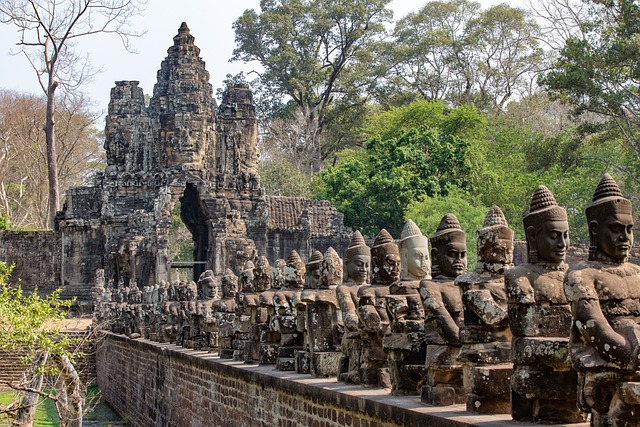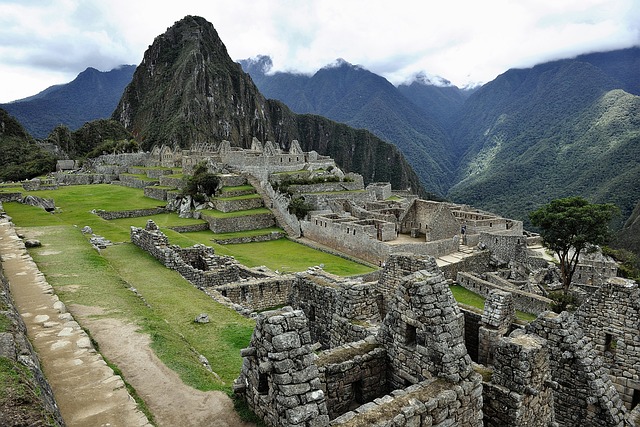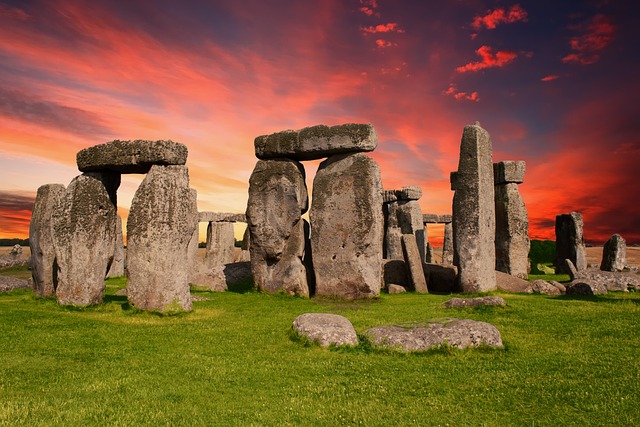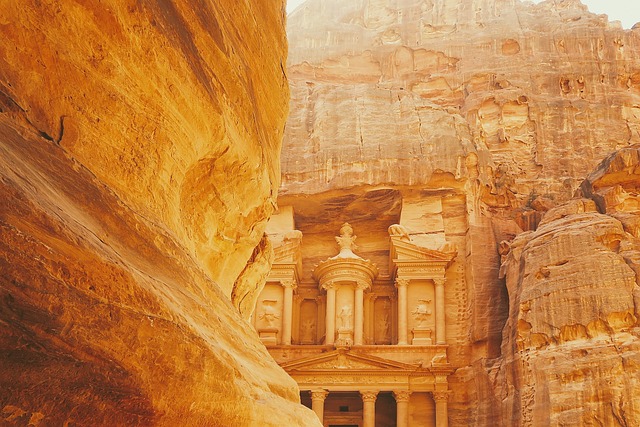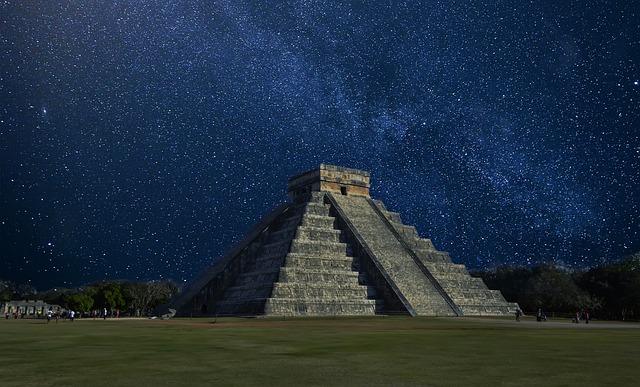Angkor Wat, Cambodia: Ancient Stones with a Side of Selfies
Nestled amongst the lush forests of Siem Reap, Angkor Wat stands as a colossal testament to Cambodia’s historical grandeur. It’s not just big; it’s the largest religious monument in the world, so you might consider wearing comfortable shoes. Constructed in the 12th century by King Suryavarman II, this temple complex was originally dedicated to Vishnu, a Hindu deity. However, throughout history, it flexed its versatility by switching affiliations to Buddhism, showcasing its spiritual multitasking prowess.

This architectural behemoth doesn’t just boast a massive size—it’s a masterclass in design, too. With intricate bas-reliefs and statues that could make Michelangelo do a double-take, Angkor Wat is an art gallery set in stone. Surrounded by a vast moat that could make any medieval castle’s defenses look like a puddle, the temple reflects the image of heaven on earth—a mirrored masterpiece when the light hits just right. It’s a must-visit spot, whether you’re a history buff, architecture enthusiast, or just someone who appreciates not having to bang their shin on coffee tables thanks to the open space.
Key Takeaways
- Angkor Wat is a record-breaking temple complex that served both Hindu and Buddhist faiths.
- Its design mirrors celestial harmony with earthly architecture, creating a monumental spectacle.
- Recognized as a UNESCO World Heritage Site, it’s a top cultural destination in Cambodia.
Historical High-Five

Before Angkor Wat became a staple image on postcards, it was a symbol of architectural and cultural prowess, showcasing the zenith of Khmer ingenuity and devotion.
Origins and Founders
The visionary behind the vast moat-ringed marvel—it’s so big it could make a giant feel claustrophobic—was none other than King Suryavarman II. The man had ambition that could eclipse the sun, and in the 12th Century, he decided to put all those blocks to work to craft what we now know as Angkor Wat, originally a place to pepper praise onto the Hindu god Vishnu.
Khmer Kings and Their Grand Designs
The Khmer rulers didn’t do “simple.” Their creations went beyond four walls and a garden gnome. Following Suryavarman II’s extravagant taste, Jayavarman VII came along and flexed his own architectural muscles to build Angkor Thom with its stone faces at Bayon, giving a whole new meaning to having “eyes everywhere.” Their designs were on a spectrum from Hinduism to Buddhism, as flexible as a yoga guru switching poses.
Angkor Wat Goes Global
Skipping ahead a few centuries to the era of high socks and explorers, the “French discovery” of Angkor Wat by a fellow named Henri Mouhot created a buzz that could wake up a hibernating bear. Suddenly, the temple complex moved from ancient mystery to global must-see, poising archaeologists in pith helmets ready to dig into Cambodia’s past faster than a cat on catnip.
Heaven on Earth: Architecture and Design

Peeking through the Cambodian jungle, Angkor Wat stands as a testament to architectural prowess and a slice of heaven on earth—without the divine intervention you might expect, but certainly with a heavenly amount of stone.
Blueprints of the Gods
The Temple Complex wasn’t just whipped up in a divine cooking show; it was a meticulously planned representation of Mount Meru, the home of the gods in Hindu cosmology. Angkor Wat’s five towers symbolize the peaks of the mountain, and the moat and concentric walls represent oceanic cosmo-ponds surrounding it. One could argue the architects had their heads in the clouds, but their blueprints were firmly grounded in religious symbolism and Khmer Architecture finesse.
A Stone’s Throw to Greatness
Builders of Angkor Wat didn’t just play a giant game of Tetris with sandstones. The massive stone bricks, hauled from a mountain 50 kilometers away, fit so snugly that not even a piece of paper could slide between them. This no-mortar approach could be whimsically considered the original “stone-age super glue”. The walls and towers stand proud, touchably close to perfect, narrating a stony saga of architectural greatness.
Bas-Reliefs and Beyond
Let’s not take these Bas-Reliefs at face value: they’re more than just pretty carvings. Spanning almost 2,000 square meters, these intricate artworks are a storyboard of epics, legends, and gods throwing what might be the most ancient party in history. The Galleries are alive with scenes, making even the latest binge-worthy shows look a bit dull in comparison. And to navigate through Angkor Wat without getting lost in the maze of Symbolism? You’d have a better shot finding a needle in a haystack – a haystack made entirely of needles.
Devotion and Transformation

In the lush jungles of Cambodia, Angkor Wat stands as a testament to religious evolution and enduring spirituality. This iconic site has swapped deities more gracefully than a divine game of musical chairs.
From Hinduism to Buddhism: A Religious Makeover
Originally, Angkor Wat was constructed as a Hindu temple dedicated to the god Vishnu. Talk about a devout beginning—it was the cosmic center of power for the Khmer Empire. But lo and behold, in a spiritual plot twist, it transitioned into a Buddhist temple. This wasn’t your average home makeover—entire galleries of Hindu art were tailored to support Buddhism’s cosmic order!
Key Transitions:
- 12th century: Vishnu worshipped, lavish Hindu art abounds.
- Later centuries: Theravada Buddhism says hello, Hindu artifacts get a new Buddhist profile.
The Temple Today: Worship and Wonder
Fast forward to modern times, and Angkor Wat is pulling double duty as a sacred Buddhist site and a magnet for wide-eyed tourists. Picture this: saffron-robed monks wandering where kings once tread, amid the click of cameras and the whispers of awe-struck travelers.
Angkor Wat in the Modern Era:
- Spiritual Significance: Still a hotspot for Theravada Buddhist pilgrims.
- Tourism: A bucket-list item for globe-trotters and history buffs.
Don’t let the stone faces fool you—this place is alive with reverence and rubbernecking alike!
Angkor Wat: The Blockbuster Star

Step right up to see the superstar of stone, the colossus of Cambodia, Angkor Wat! This architectural marvel didn’t just rise to fame for its good looks; it’s been gracing the annals of history since the 12th century and has found its way onto the Cambodian flag. Talk about national pride!
- Tourist Attraction: Top of the charts, Angkor Wat is the Beyoncé of temples.
- Peak Tourist Season: Come high season, it’s a veritable who’s who of the backpacker world.
- Monsoon Season: Let’s just say it’s the temple’s moody phase—bring an umbrella!
- Cambodian Flag: Is it a bird? A plane? Nope, that’s Angkor Wat flying high.
- Southeast Asia: As the crown jewel of the region, it’s the VIP pass you need.
- Cambodia: This country certainly knows how to ‘temple’ the audience.
- Siem Reap Province: What’s Hollywood to the stars is Siem Reap to the stones!
If the head honchos of history could have foreseen that their sacred sanctuary in the heart of Siem Reap Province would become a selfie-studded sanctuary, they might have installed velvet ropes. The facade of Angkor Wat has seen more camera flashes than a Hollywood premiere as it graces the must-see list of every trotting globetrotter in Southeast Asia.
During the peak tourist season, there’s enough people to stage a small invasion of exceptionally polite, camera-wielding folks. And while the monsoon season can turn the temple grounds into something of a slip and slide, it can’t dampen the spirits of those eager to see this titan of temples with their own awestruck eyes.
So, if the travel bug bites and you’re itching for an experience that’s larger than life, remember that Angkor Wat has been ready for its close-up for centuries. Lights, camera, action—let’s give it up for Angkor, the blockbuster star of Cambodia!

